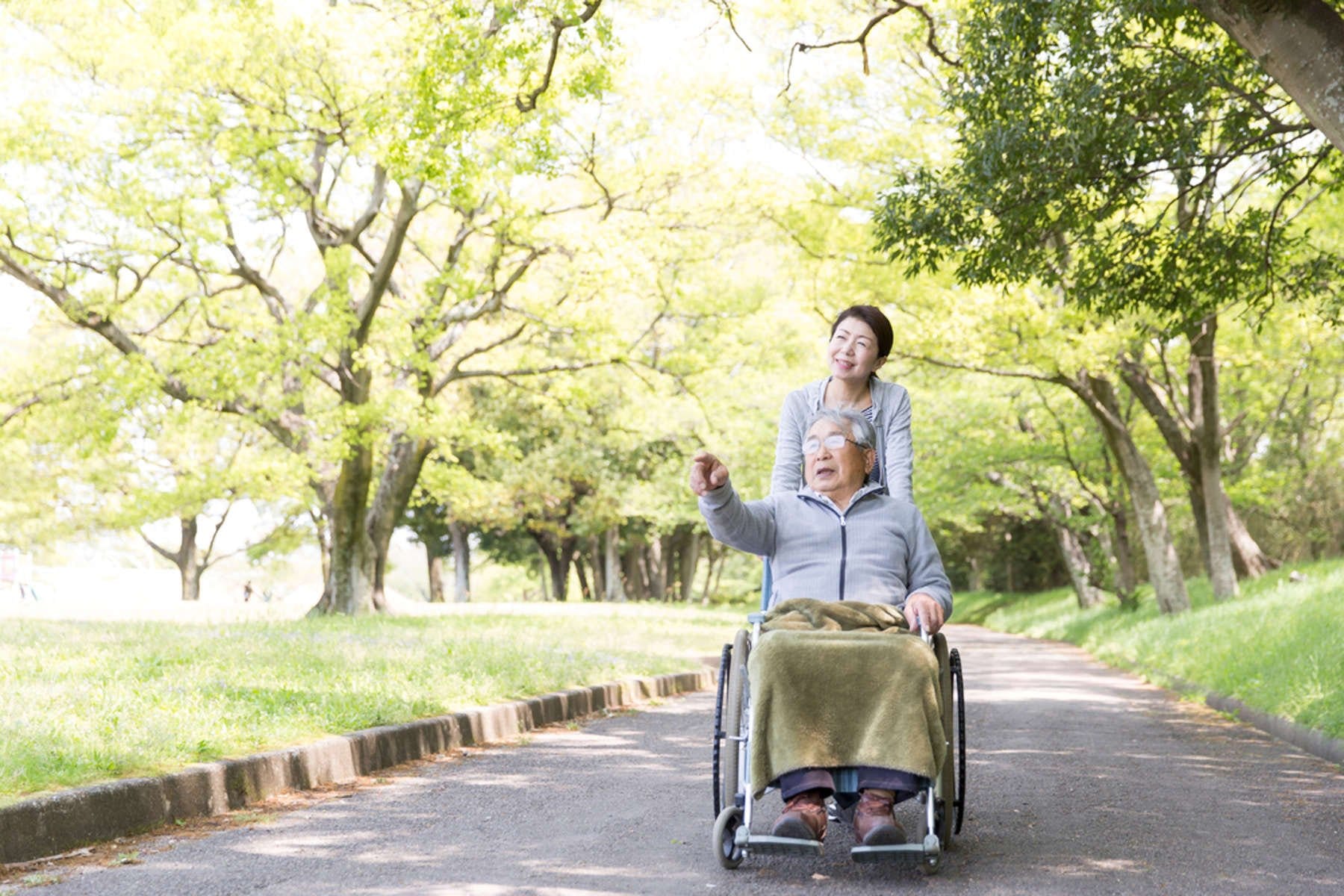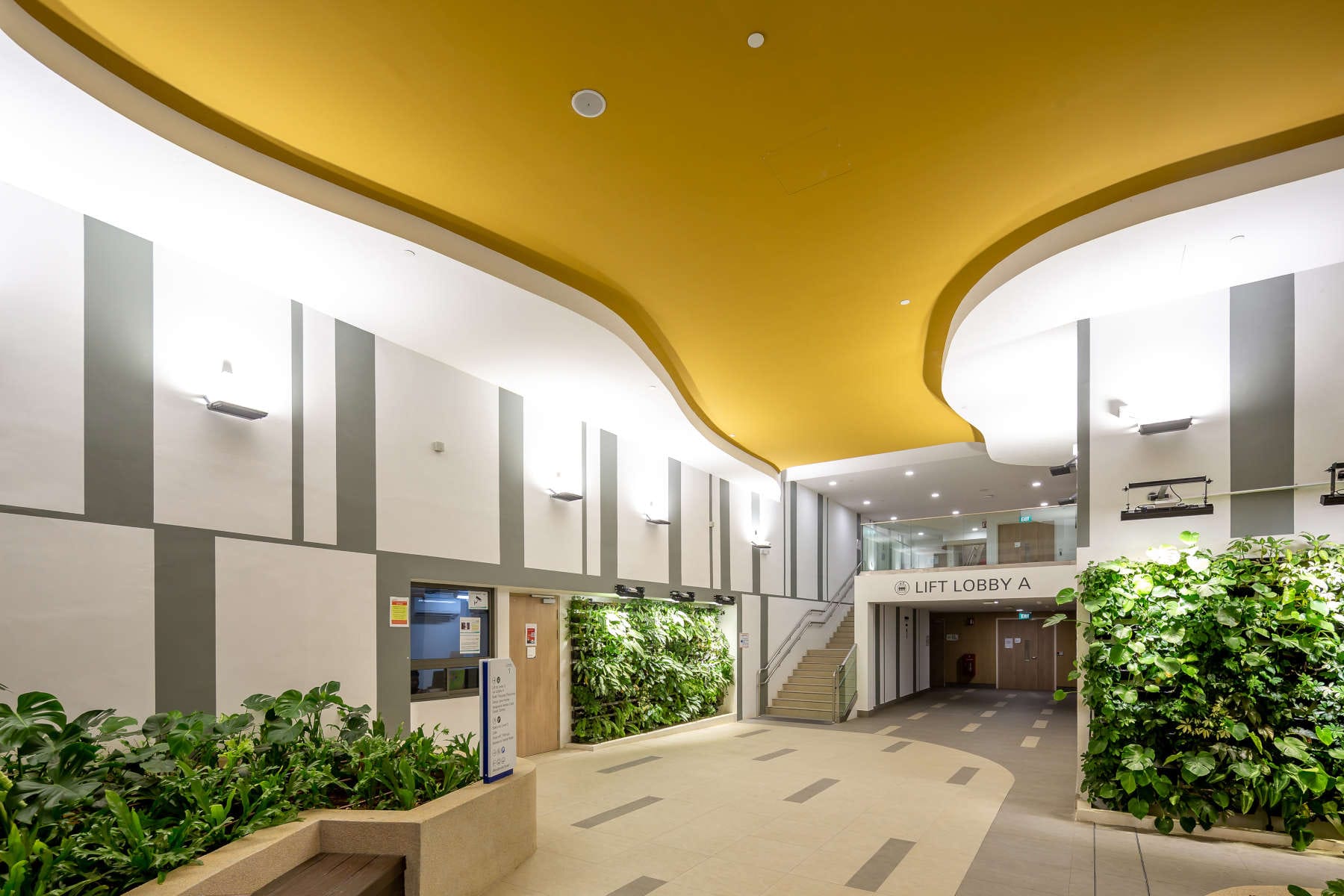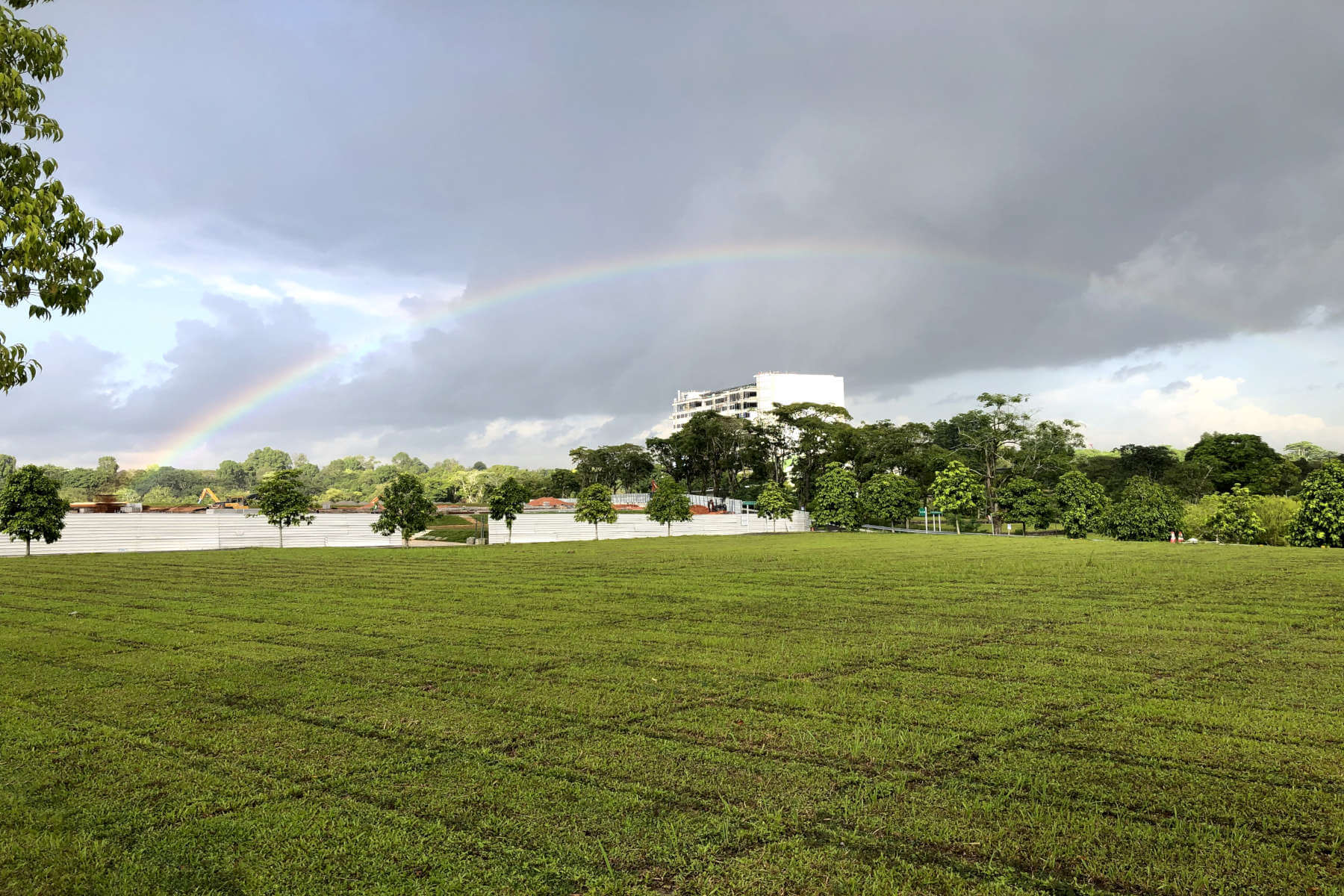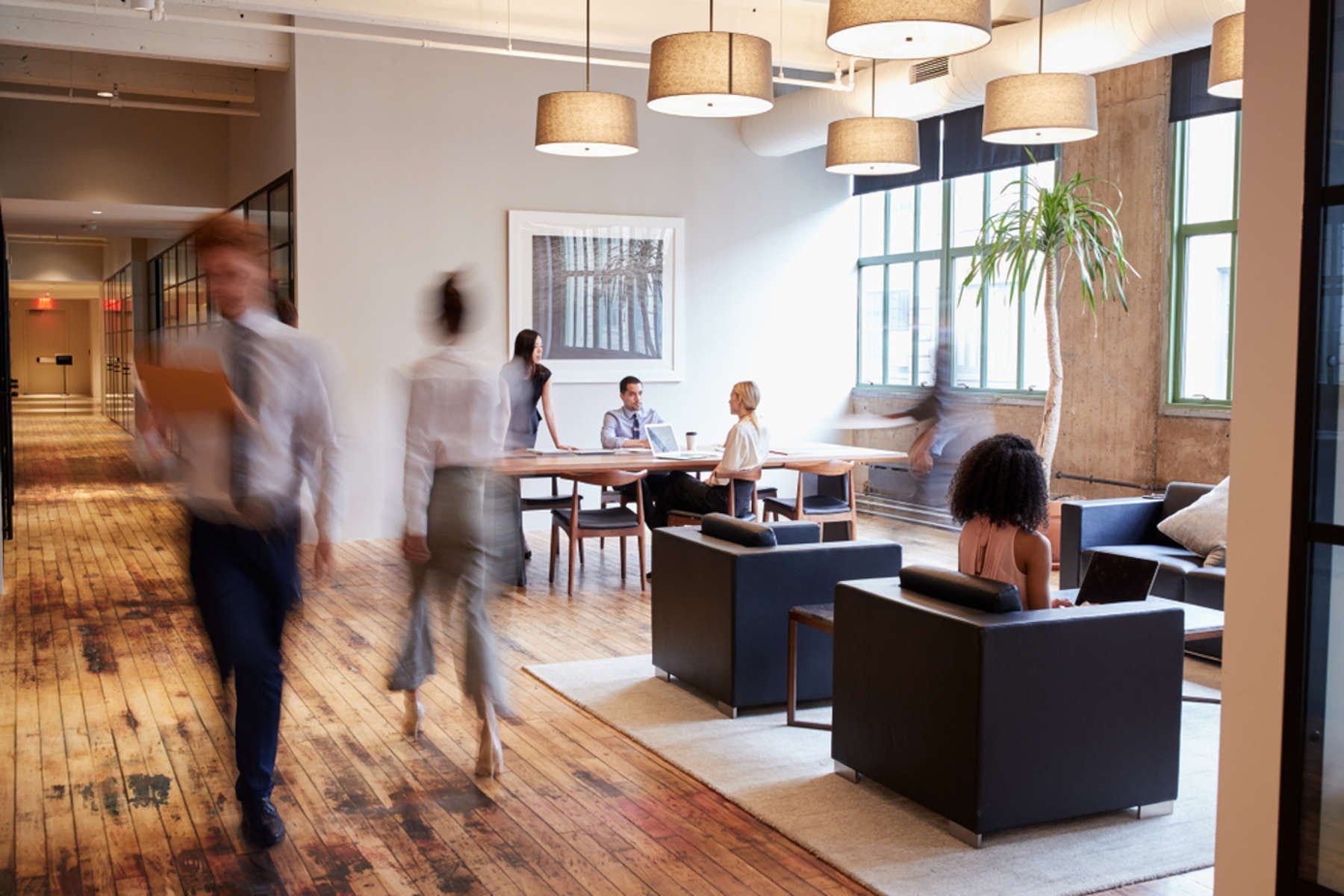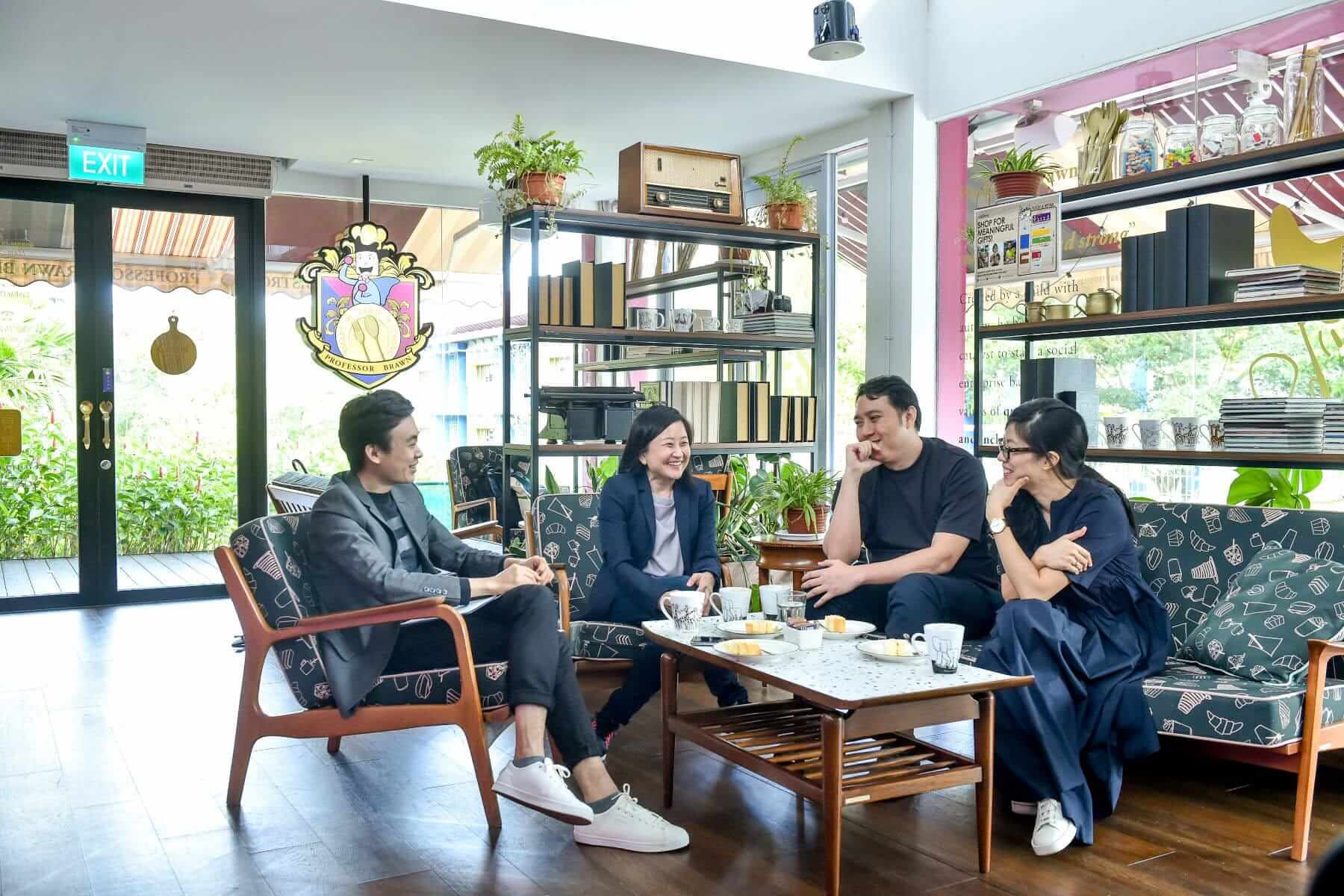INVISIBLE DESIGN
How it can affect your mood and health
February 2023
Abstract: Designers have much power over whether occupants feel relaxed or pressured in the
environments they design for them. The authors discuss how the use of familiar elements such as
plant motifs, can help patients to stay calm in a clinical setting. The use of scents and
sounds to create scentcapes and soundscapes is also gaining traction as designers seek to find
ways to help users differentiate between spaces for rest and spaces for work; as well as enter
psychological states of focus and concentration. Designers also have the responsibility of using
appropriate materials to avoid odourless pollutants in a working space. They also look at the use of
non-recirculated air in interior spaces to flush out invisible toxic microbes in Singapore’s first
new-built net zero building, SDE4, on the campus of National University of Singapore, which
champions indoor air quality and comfort, and energy efficiency by reducing the use of
air-conditioning while keeping users cool and comfortable.
Spaces, places, and buildings are undoubtedly encountered as multisensory lived experiences. Instead of registering architecture merely as visual images, we scan our settings by the ears, skin, nose, and tongue. – Juhani Pallasma, Finnish architect and theoretician, author of The Eyes of the Skin: Architecture and the Senses
The environment which we are immersed in has an unconscious effect on our being. For example,
most people can identify with experiencing some form of stress and anxiety while being in a
doctor’s waiting room. It is the anticipation of the unknown, whether it is just a routine check-up or a
long-drawn battle with an acute illness, that causes white-coat anxiety. In 2013, a study found that
between15 to 30 percent of high blood pressure readings taken at a doctor’s office might have
resulted from such anxiety.
Post-pandemic, the society has become more aware of the importance of our connection to nature for
health and wellness, sparking more interest to look towards nature for solutions to the design
issues that urbanisation brings.
Biophilia – an age-old intuitive desire to be close to nature
Historically, nature has played a role in the design of homes and public spaces. The paper, “14 Patterns of
Biophilic Design”, published by Terrapin Bright Green, an environmental consulting and strategic
planning firm, sets up three categories within a framework to understand the strategies of
incorporating nature into the modern built environment.
The section, “Nature in space”, focuses on the direct physical connection to nature. It includes visual and non-visual
experiences of nature through the incorporation of elements such as water, daylight, breeze, greenery
or the use of natural materials in interior spaces, the use of sounds of a water feature or the aroma of
herb gardens to soothe people using the space.
Using “natural analogues” designers can also reinterpret patterns and systems characteristic of the
natural world by choosing materials reminiscent of nature, or naturalistic shapes and forms, with the
purpose of calming the senses. Lastly, designs that incorporate the “nature of the space” use spatial
configurations in nature to seek refuge and protection, to allow users to experience the mysteries and
thrills of nature.
Biophilic elements are important aspects in humanistic interior design for the post-pandemic age. Biophilic spaces reduce stress, anxiety, enhance mood, restore
concentration and creativity, provide a sense of vitality and even
expedite healing. How do we seek out these restorative invisible
elements in the design of a holistic built environment, in a healthcare environment for instance, where biophilic elements can provide healing beyond
medical care?
Biophilic spaces reduce stress, anxiety, enhance mood, restore concentration and creativity, provide a sense of vitality and even expedite healing. How do we seek out these restorative invisible elements in the design of a holistic built environment?
The use of biophilic elements for healing and to alleviate anxiety
In a healthcare setting, architects and designers have a duty towards creating spaces which help
support a person’s holistic journey of recovery. This duty extends beyond the patient to care
providers, caregivers and medical professionals. A patient’s state of mind could either enhance or
impede one’s journey towards healing and recovery. A 1995 study found that wounds on patients who
were under stress took longer to heal than those on patients who were able to recover in a less
pressured environment. Another study from Texas Tech University in the United States investigated
the impact of eight environmental elements, namely nature, lighting and music, on the health outcomes
of patients within the hospital setting. It was found that patients who were exposed to nature, such as
indoor plants, while recovering in a hospital setting felt less anxious than patients who were exposed to
none.
Traditionally, architecture has been dominated by the sense of sight. In designs where visual aesthetics
take precedence, nature and biophilic elements for wellbeing are presented visually to create a sense
of comfort and calm.
Take the example of the Makati Medical Centre’s Women Wellness Center in the Philippines, where
human-centric designs are prioritised to support a relaxing, holistic journey of recovery addressing
women’s healthcare needs.
The centre’s main reception area is designed to resemble a refuge in the woods, providing
a comforting sense of protection to visitors. A bamboo-mirror wall feature at the lift lobby is a delightful surprise as people can see their reflection amidst a bamboo forest despite being in a clinical
setting. Bamboo is intrinsic to the culture of Philippines, from lush bamboo gardens in
memories of childhood play, to the daily furniture that families use in their homes. The sight of
the bamboo forest momentarily transports one to a more familiar and comforting setting. The bamboo feature
wraps around the corner and brings the visitor’s eye to a multi-layered floral printed wall panel.
Visitors in the corridors and waiting lounges can enjoy beautiful views of the city. Ambient natural light
fills the waiting lounge, entering via wide panoramic windows filtered by timber screens. The waiting area feels like a lush garden. The main activity zone for the Rehabilitation Clinic is designed as an open space
with plenty of unblocked views and daylight. Special care went into the selection of the flooring material
that have a deodorising effect to prevent unpleasant smells, creating a healing-centred
environment.
A bamboo-mirror wall feature is a delightful surprise as people can see their reflection amidst a bamboo forest despite being in a clinical setting... momentarily transports one to a more familiar and comforting setting.
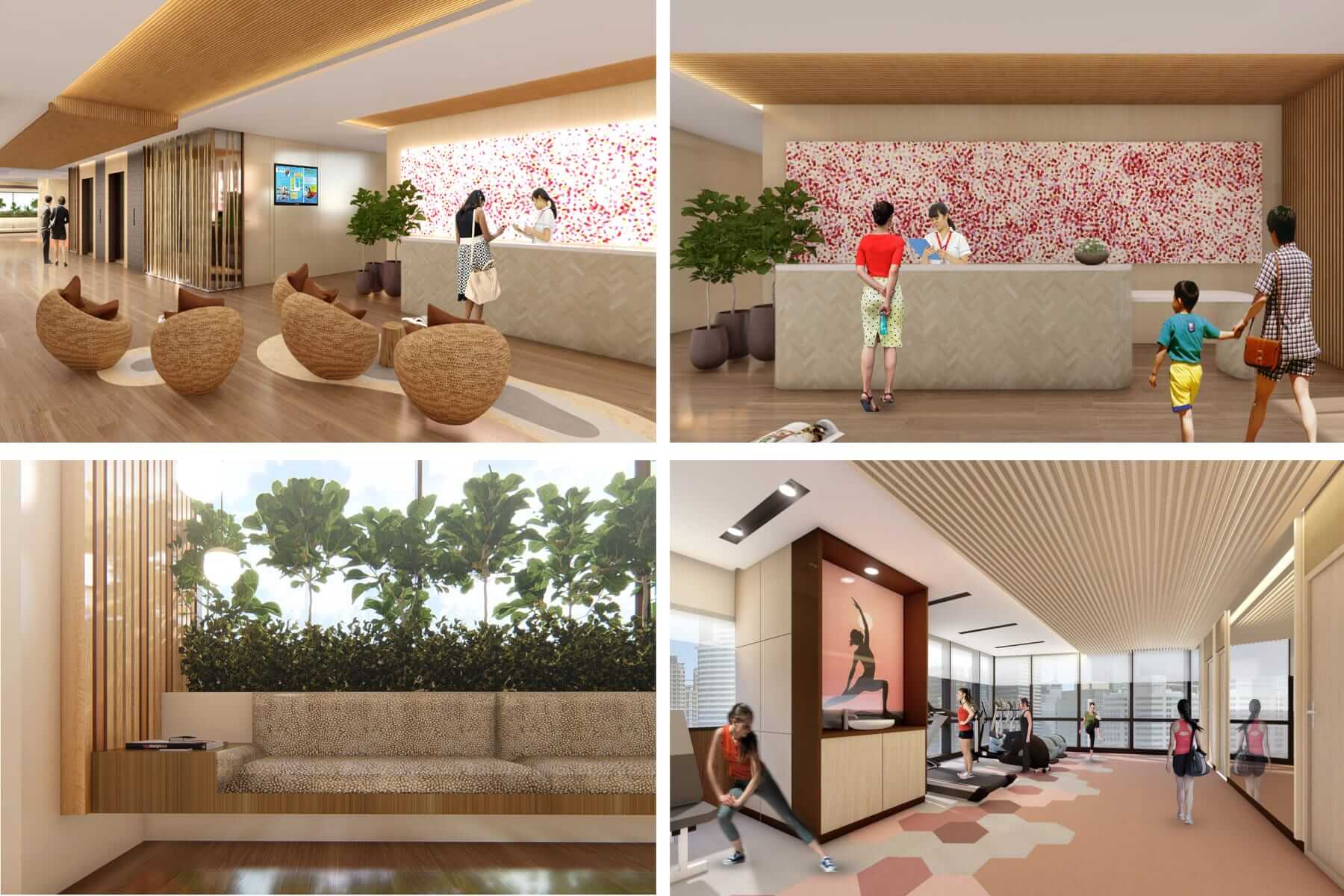
Makati Women Wellness Centre’s main reception area has a bamboo-mirror wall (top left and top right images) that creates a harmonious arrival experience which
calms, comforts and alleviates the anxiety of medical treatment. The rehabilitation areas (bottom right image) and waiting lounge (bottom left image) offer
panoramic views of the city and ambient daylight, allowing artificial lighting to be dimmed or switched off at certain time of the day, creating an energy-efficient
indoor environment.
(Photo: SAA Architects)
(Photo: SAA Architects)
the invisible bonding agent
In recent years, architects and designers started to consider the role played by the other non-visual
senses, namely sound, touch, smell and taste in our built environment, in promoting social, cognitive, and
emotional development.
The sense of smell has the greatest connection to memory and emotions compared to all other senses.
The smell of our favourite comfort food can transport us back to our childhood memories in an instant as
pleasant smells could uplift our daily emotions and moods quite significantly.
During the pandemic, much of our time was spent in our homes and boundaries between work, family and
relaxation were blurred and intertwined. In response, designers explored the idea of ‘scentscaping’ homes
using essential oils, flowers or diffusers to redefine zones for working, sleeping and resting. By using
distinctive scent in each space, spaces can be zoned for work or relaxation, restoring boundaries in the
home for better mental wellbeing. In the retail scene, scentscaping have long been introduced in shopping
malls, where a distinctive scent is used to create a pleasurable retail experience for shoppers and to define
unique corporate branding and identity for the retailer.
In Singapore, where people bond over food and drinks, a taste for coffee brings a community together. At
the residential transit-oriented development, Canberra Plaza, a new-generation three-storey
neighbourhood centre serves as a one-stop destination for its residents and the general public.
Amongst its many facilities is a family lounge designed for communal use, where people can mingle over
coffee, read or work. Natural daylighting from the adjacent central atrium skylight illuminates
its bright interior which provides a warm feel to the place. The aroma of coffee and fresh bakes coming from the café anchors the place. This community space forms a scentscape and personality of its own, drawing
visitors to it.
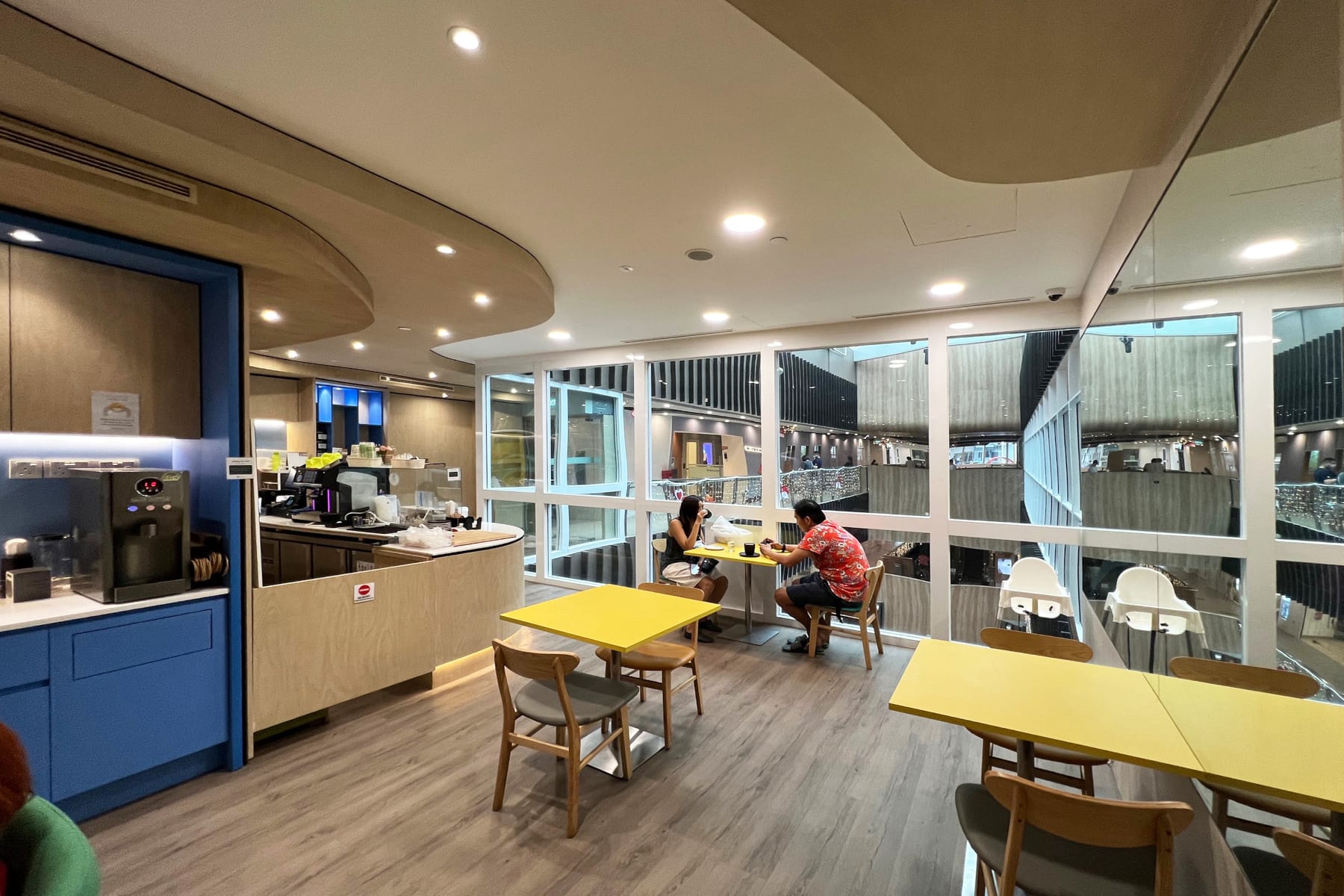
(Photo: Ooi Phaik Sim & Wong Lei Ya)
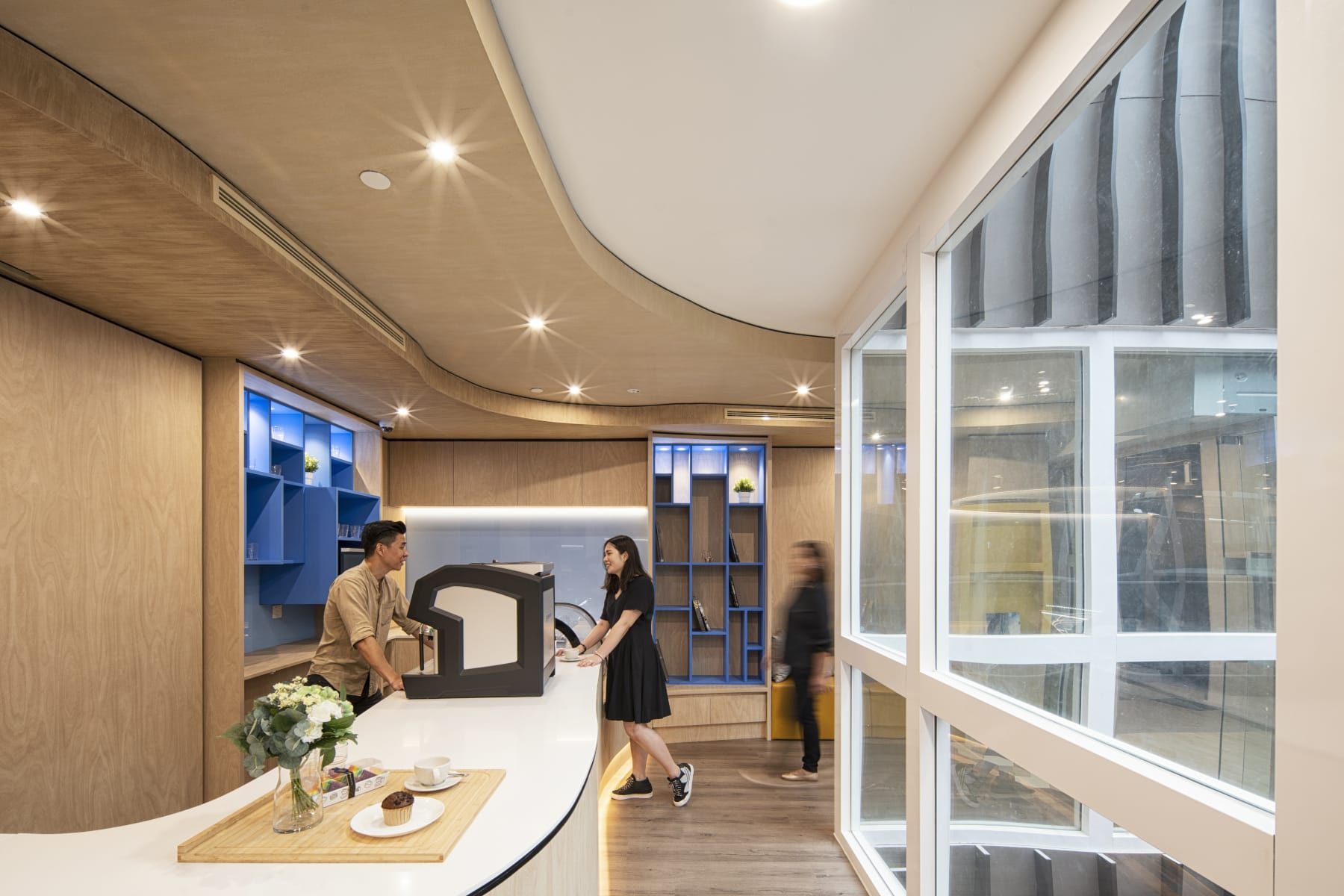
(Photo: SAA Architects)
The Family Lounge at Canberra Plaza is an inclusive, community space defined
by its scentscape
Navigating urban soundscapes for acoustic wellness
Living in a dense urban environment, city-dwellers have become desensitised to the myriad
unpleasant sounds surrounding us. The constant hum of a nearby expressway or rail network, open
plan offices, working from home are some scenarios where the indoor acoustic environment is
influenced by the exterior.
Yet urban noise pollution can interfere with our health, sleep, concentration and productivity. The need
for acoustic wellbeing becomes more pronounced in residential homes often requiring natural
ventilation – where both sound and wind could enter. A good case in point is a study involving a large
population base in Ontario, Canada that found people living close to major roads with heavy vehicular
traffic have an increased occurrence of dementia.
Acoustic comfort is an important aspect of design which is largely invisible to us. How can we create healthy acoustics indoors by balancing and regaining control of the unpleasant and pleasant?
In the design of open plan offices, appropriate
material selection for acoustic absorption and
reverberation should be considered along with
acoustic masking strategies. Nature-inspired biophilic soundscapes were installed and tested at a
company’s headquarters in Michigan, in a space
designed for focused work.
This has since become one of the most utilised spaces on the
work campus. Research carried out to test the effects
of biophilic soundscape in a London-based
workplace found that workers experienced increased
relaxation and focus, and creative thinking
improved. Bringing the sound of nature indoors
relaxes the mind and triggers our body’s circadian rhythm, connecting with our overall wellbeing.

Residential developments along an expressway in Singapore
(Photo: Ooi Phaik Sim)
Noise can lower productivity as it affects our concentration, productivity and creativity. As such, open
plan offices should also provide choices for different work environments, such as a good mix of private
and communal working spaces. In a review of Environmental Psychology, it was found that personal
space and privacy could enhance the wellbeing of an individual or community. Privacy is a dynamic
process of restricting visual and auditory access of oneself from others. By offering different settings
for an individual to choose from, it gives the sense of control of the environment back to the user,
and that helps lower anxiety.
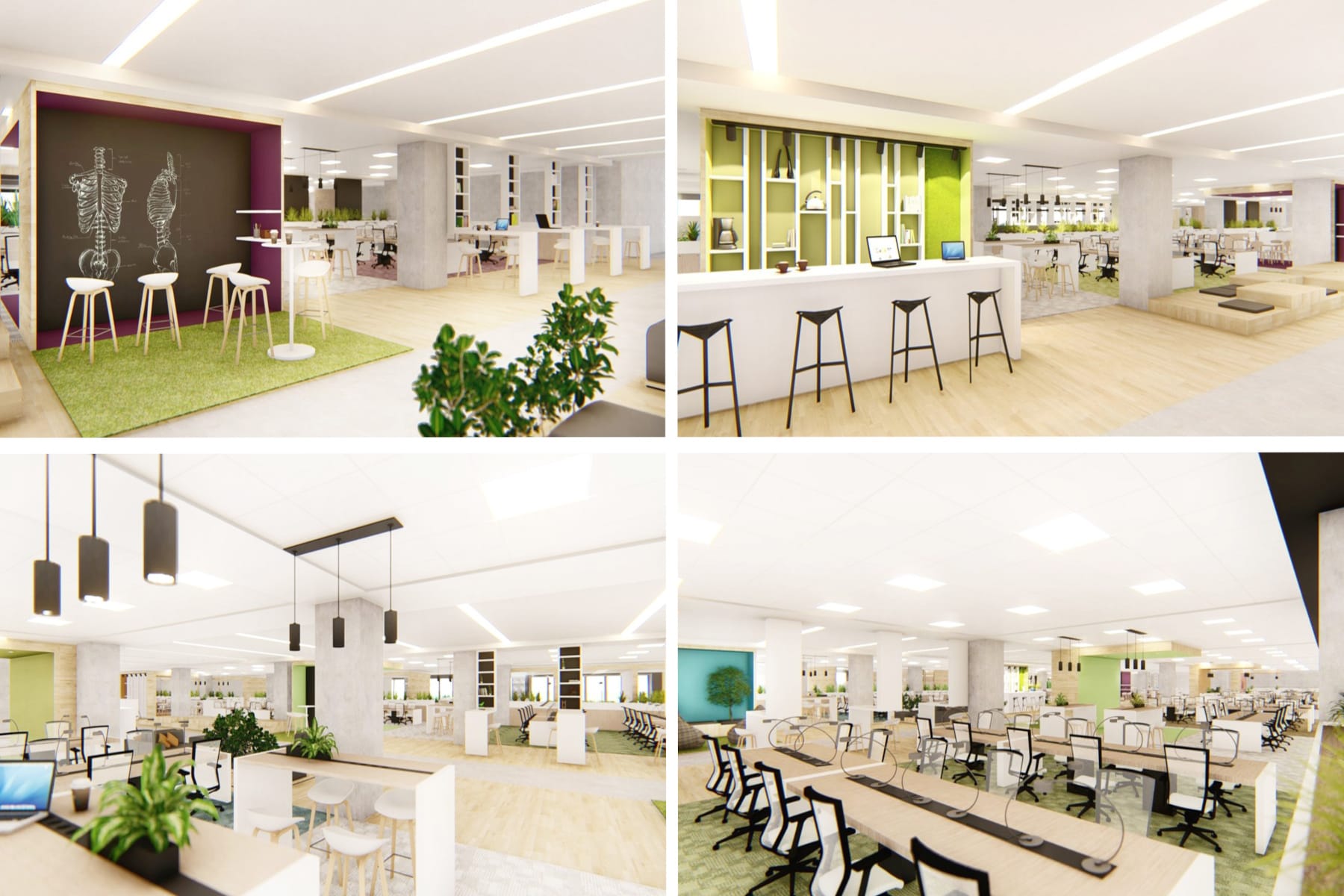
A variety of office work spaces comprising collaboration spaces, cluster huddle and cluster workbenches in an administrative building
(Photo: SAA Architects)
Tackling invisible microbes in the coronavirus age
Another often-neglected design component is the impact of indoor air quality (IAQ) on health and
wellness. The choice of healthy indoor materials is paramount for clean and healthy indoor air. In
1973, NASA scientists discovered over 100 types of volatile organic compounds (VOCs) released by
synthetic materials used in its construction within the indoor air of a space station. Inhabitants became
ill as a result of inhaling chemicals trapped in its uncirculated air, similar to how occupants experience
‘sick building syndrome’ in conventional buildings with poor air circulation. Engineered woods and the
glue that holds them together contain formaldehyde that pollutes our indoor air. The toxins released by
synthetic materials can be absorbed through inhalation or contact with skin. Designers need to choose
healthier material options and explore other design interventions to mitigate this issue
The use of common house plants to alleviate indoor air pollution was first carried out in the
abovementioned NASA research experiment to study how nature purifies and recycles indoor air in an
airtight building. Taking a leaf from that, an extensive 5-storey high biowall, located at an atrium space
at Drexel University, Pennsylvania, showcases a vertical green wall with a diverse array of air-purifying
plants organised by watering needs and visual cues. It serves as a living biofilter of indoor air and
growing in the absence of soil.
Air passes through the biowall via the building’s heating, ventilation and air-conditioning (HVAC) system, where VOCs are broken down to
carbon dioxide and water. The purified air is then recirculated throughout the building via the HVAC
system.
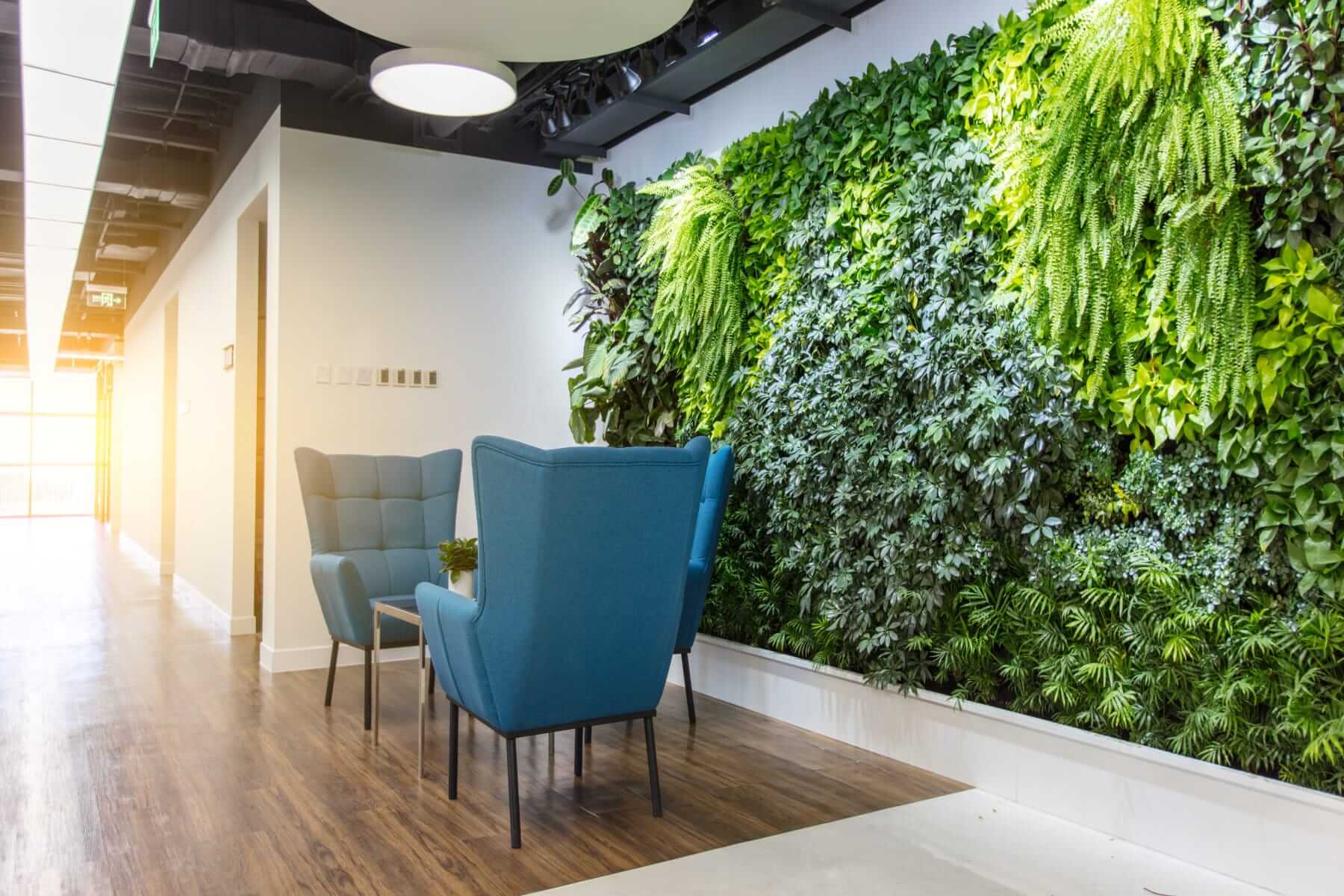
A green wall within an interior setting
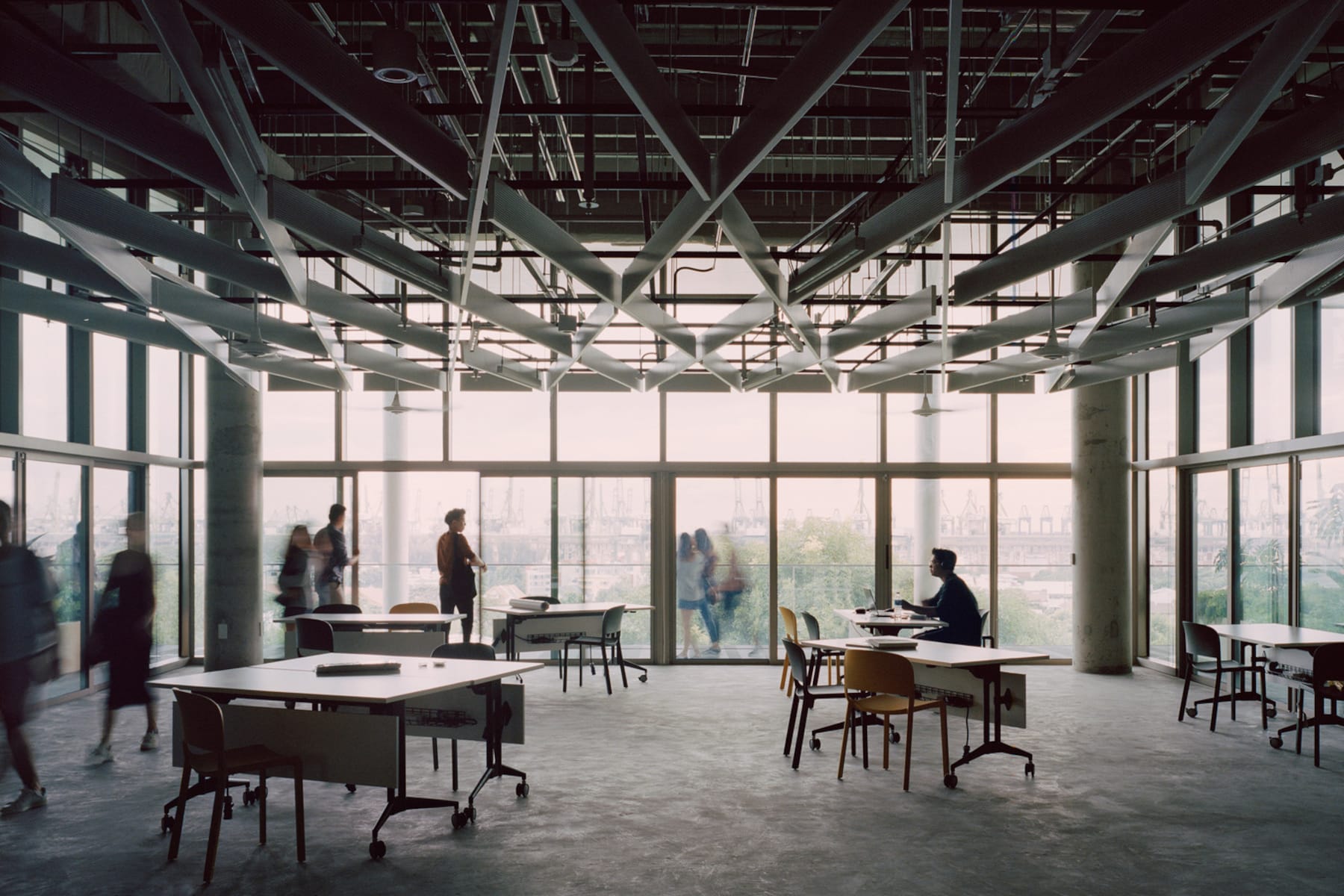
In Singapore, NUS’ School of Design & Environment
4 uses an innovative hybrid cooling system. This is
integrated with the architectural design from the
conception stage with the goal of championing indoor
air quality and comfort and energy efficiency. Its
indoor spaces are supplied with 100 percent fresh
pre-cooled air with no return air, at higher
temperatures and humidity levels than conventionally
done. The Covid-19 pandemic has accentuated the
importance of non-recirculated air in interior spaces
to flush out invisible toxic microbes. As a result of
bringing fresh air into the building, a seamless
indoor-outdoor space is created for a healthy living
environment.
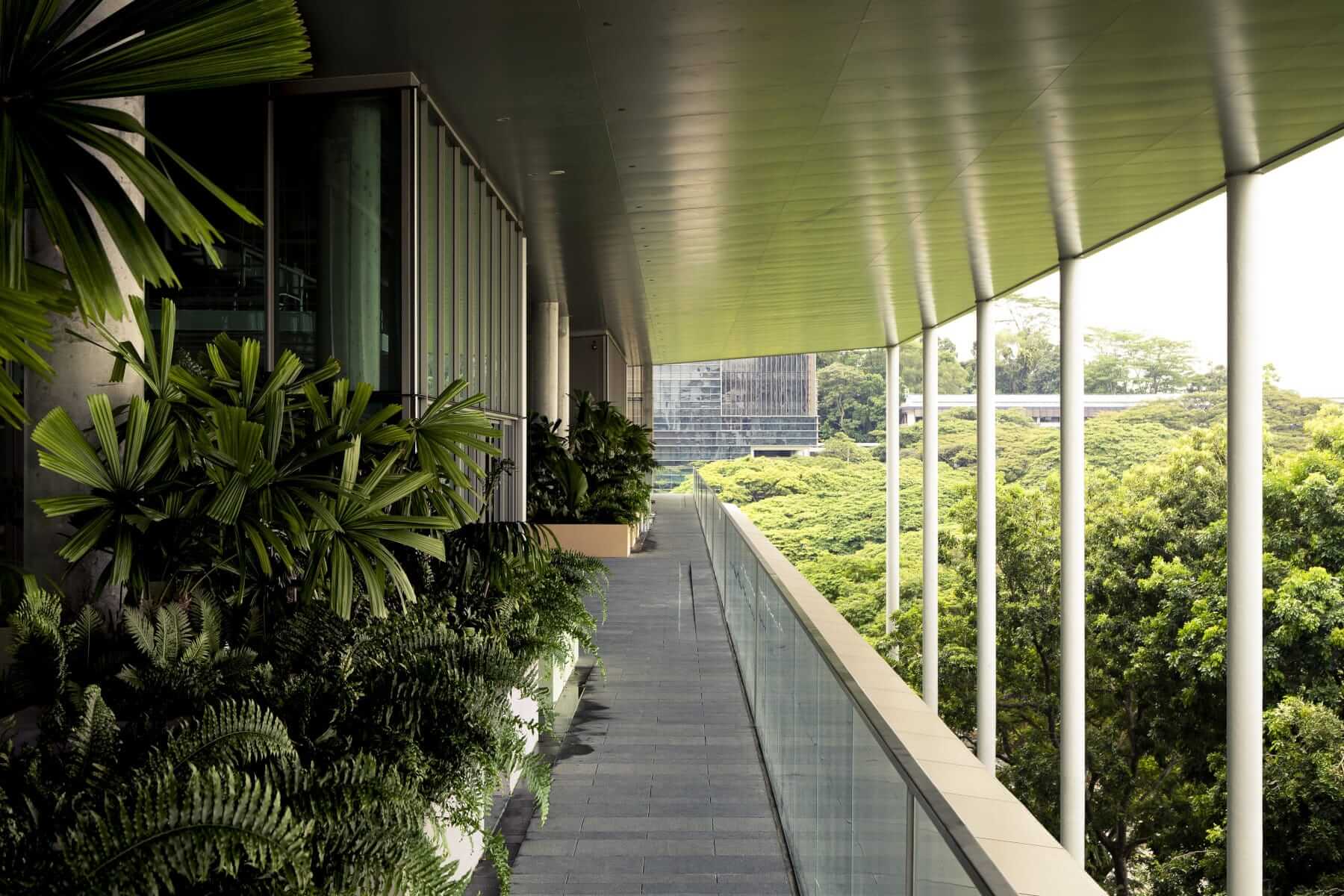
A seamless indoor-outdoor connection is created at NUS School of
Design & Environment 4. Surbana Jurong is the full-suite consultant
for the project, in collaboration with Serie+Multiply Consultants and
Transsolar Klima Engineering.
(Photo: SJ Architecture)
(Photo: SJ Architecture)
The Covid-19 pandemic has accentuated the importance of non-recirculated air in interior spaces to flush out invisible toxic microbes. As a result of bringing fresh air into the building, a seamless indoor-outdoor space is created for a healthy living environment.
Designers need to be attuned to environmental psychology and the impact of the built environment on
our wellbeing. Ultimately, the challenge in the design of a holistic, biophilic environment in interior
spaces is how to transpose this multifaceted, integral experience in nature, using the visible and invisible aspects of design to create immersive, multi-sensorial urban
sanctuaries.
The SEEDS Journal, started by the architectural teams across the Surbana Jurong Group in Feb 2021, is a platform for sharing their perspectives on all things architectural. SEEDS epitomises the desire of the Surbana Jurong Group to Enrich, Engage, Discover and Share ideas among the Group’s architects in 40 countries, covering North Asia, ASEAN, Middle East, Australia and New Zealand, the Pacific region, the United States and Canada.
Articles at a glance




